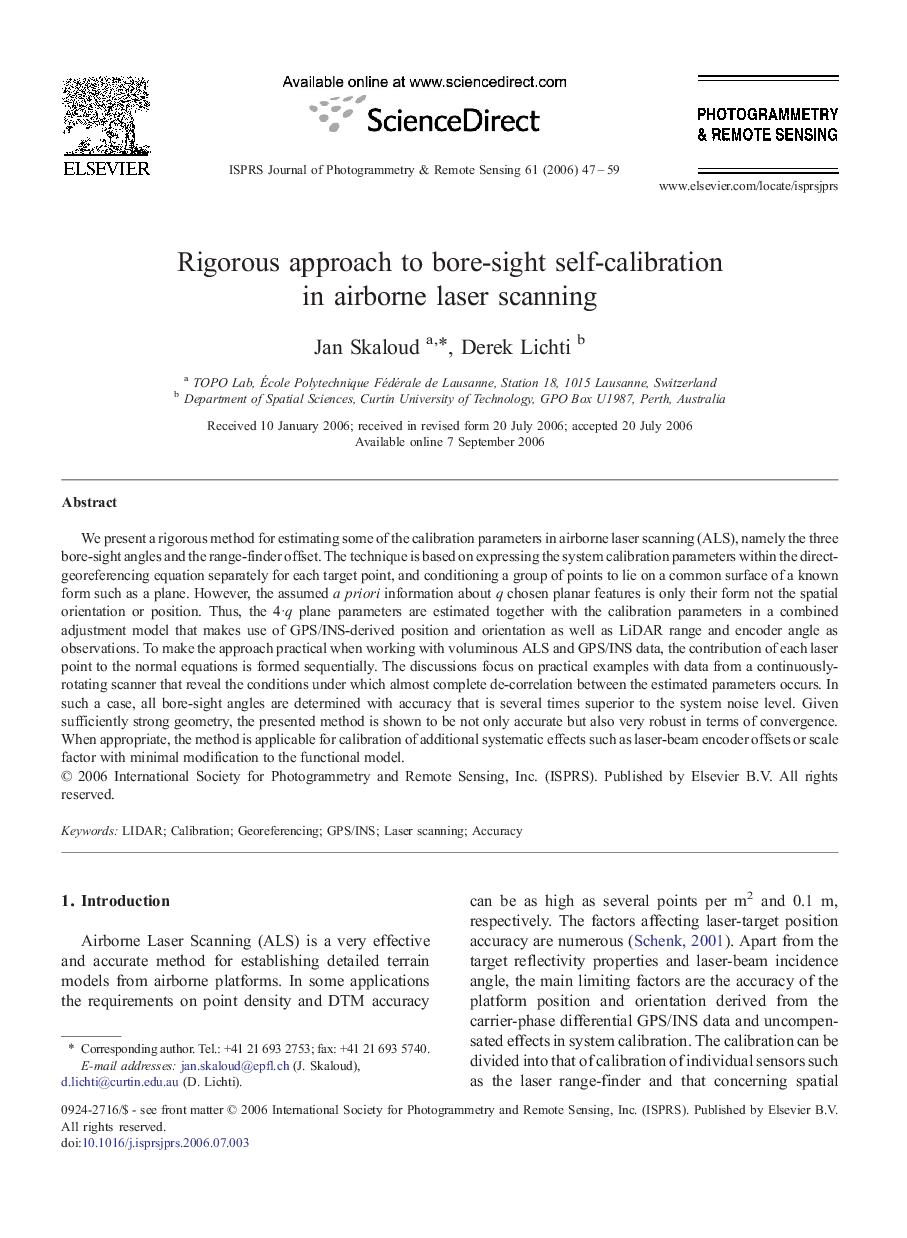| Article ID | Journal | Published Year | Pages | File Type |
|---|---|---|---|---|
| 555273 | ISPRS Journal of Photogrammetry and Remote Sensing | 2006 | 13 Pages |
We present a rigorous method for estimating some of the calibration parameters in airborne laser scanning (ALS), namely the three bore-sight angles and the range-finder offset. The technique is based on expressing the system calibration parameters within the direct-georeferencing equation separately for each target point, and conditioning a group of points to lie on a common surface of a known form such as a plane. However, the assumed a priori information about q chosen planar features is only their form not the spatial orientation or position. Thus, the 4·q plane parameters are estimated together with the calibration parameters in a combined adjustment model that makes use of GPS/INS-derived position and orientation as well as LiDAR range and encoder angle as observations. To make the approach practical when working with voluminous ALS and GPS/INS data, the contribution of each laser point to the normal equations is formed sequentially. The discussions focus on practical examples with data from a continuously-rotating scanner that reveal the conditions under which almost complete de-correlation between the estimated parameters occurs. In such a case, all bore-sight angles are determined with accuracy that is several times superior to the system noise level. Given sufficiently strong geometry, the presented method is shown to be not only accurate but also very robust in terms of convergence. When appropriate, the method is applicable for calibration of additional systematic effects such as laser-beam encoder offsets or scale factor with minimal modification to the functional model.
